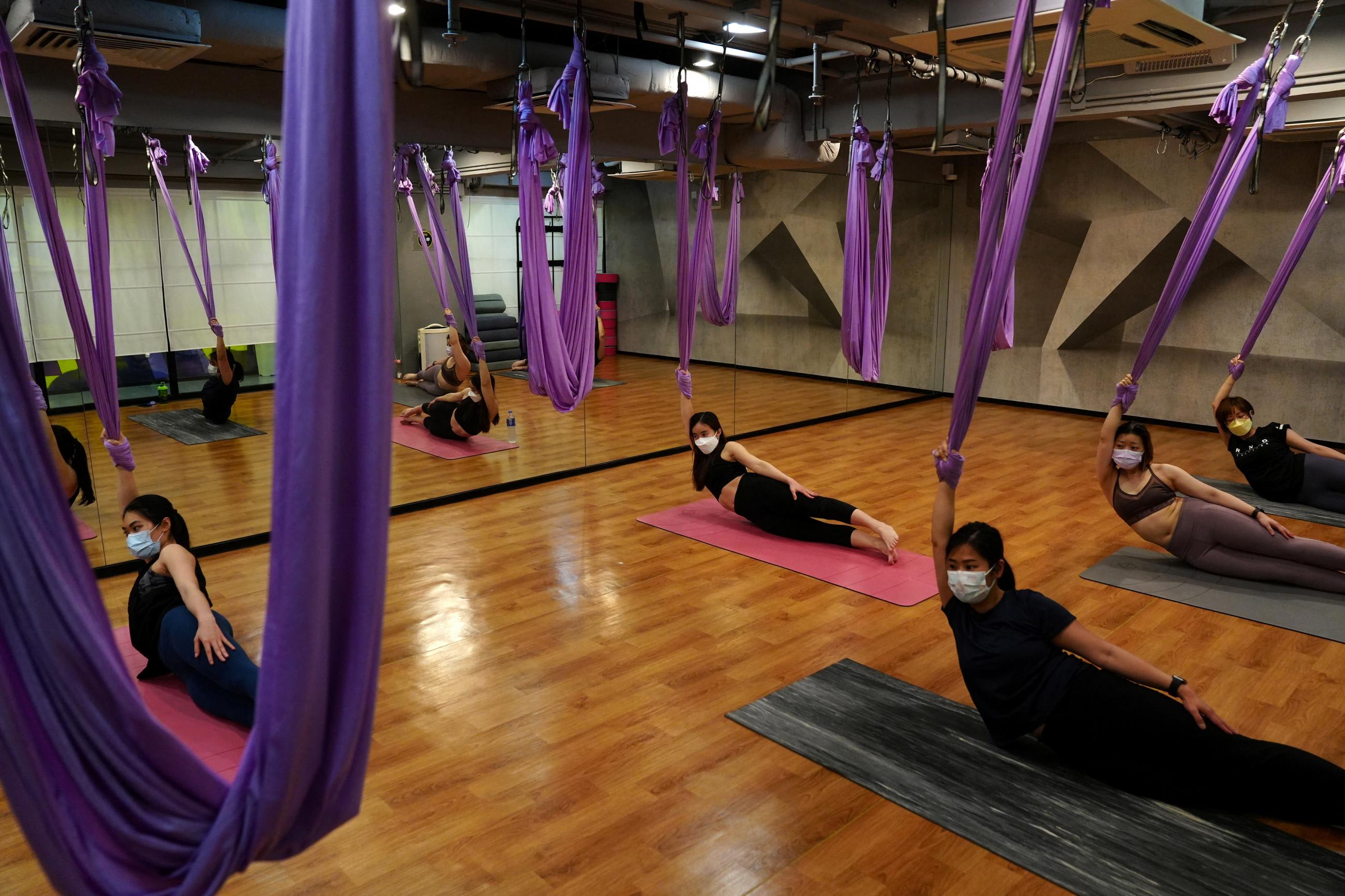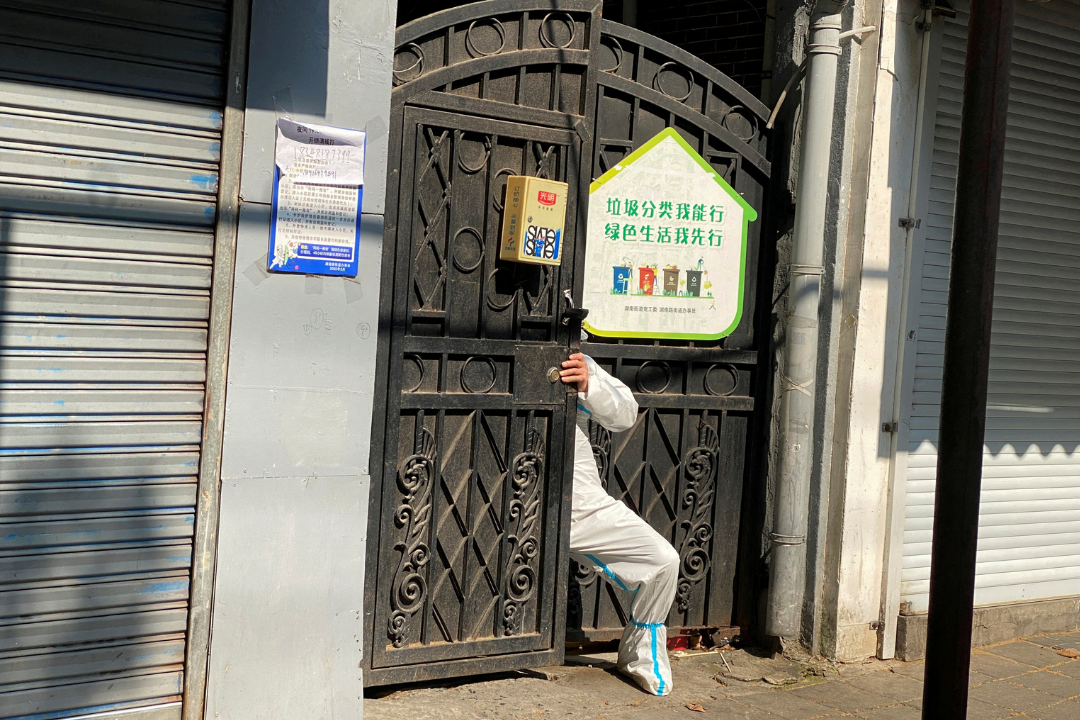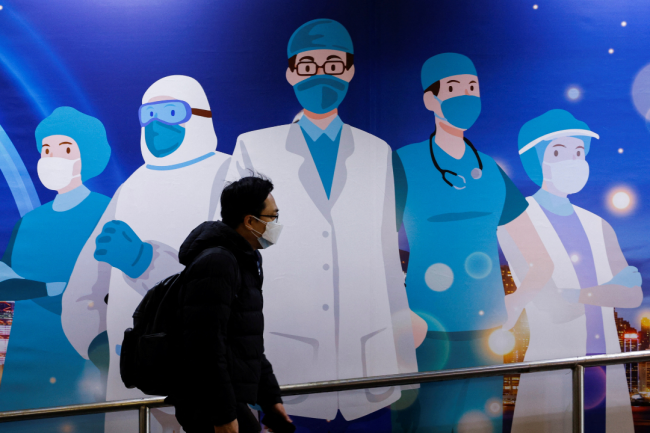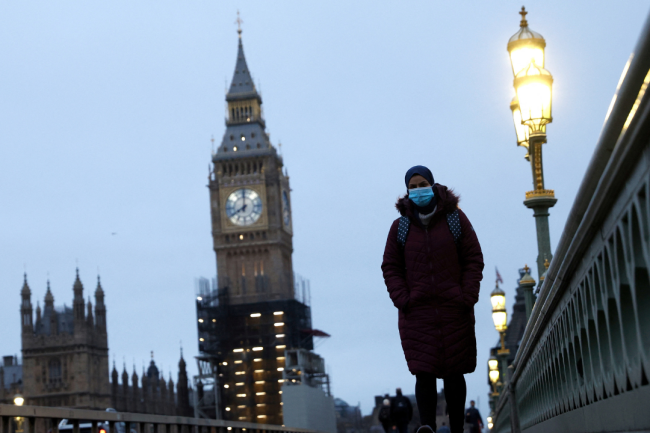The COVID-19 pandemic is not over, UN Secretary-General António Guterres recently warned. This certainly holds true for China. The country is battling its worst COVID-19 outbreak in two years, after largely containing its initial outbreak in February 2020. On April 25, there were just over 31,000 new cases recorded in mainland China, the highest daily count since the start of the pandemic. This latest outbreak, its threat to the economy, and a population undergoing lockdowns, testing, and vaccination issues has created a complex scenario for the country.
When It All Began
Back in early 2020, the world was stunned to see the success of the radical lockdown imposed by China in Wuhan, where COVID was first detected. Over the next two years, China's zero-COVID strategy continued to be highly successful at curbing infections, with new daily cases rarely rising above the low hundreds. This success was achieved through strict lockdown measures, quarantine, contact tracing, travel restrictions, and mass testing.
Back in early 2020, the world was stunned to see the success of the radical lockdown imposed by China
But the success story in China is coming into question with infections rising so fast now that some think that China needs to brace itself for an escalating outbreak of the omicron variant, with frightening projections of overwhelmed hospitals and a devastating death toll.
But even if China manages to reign in the current outbreak, a smooth exit from its zero-COVID strategy will be difficult. The country's population has not seen the infections levels that many other countries have experienced, which means that there is hardly any infection-induced immunity to the virus. Vaccine-induced immunity played a role in stemming transmission for other countries that followed a zero-COVID strategy, including Australia and New Zealand. But in China, millions of people over the age of 60 are yet to be fully vaccinated. And even if coverage of the current vaccination regime is increased, it will only have a modest impact; the Chinese-manufactured inactivated Sinovac and Sinopharm vaccines provide little protection against omicron infections and only moderate protection against severe disease. A COVID-19 inactivated vaccine by Sinopharm obtained approval for clinical trials this month.
China has little choice but to continue its zero-COVID strategy and use stringent lockdowns to keep transmission of omicron under control. The business hub city of Shanghai is now in its fourth week of lockdowns. Initially, different lockdown strategies were introduced—including restrictions on the movement of residents and mass testing by city blocks—to minimize disruptions to the economy. However, this strategy wasn't effective and case numbers increased, and now stricter city-wide lockdowns have been introduced.
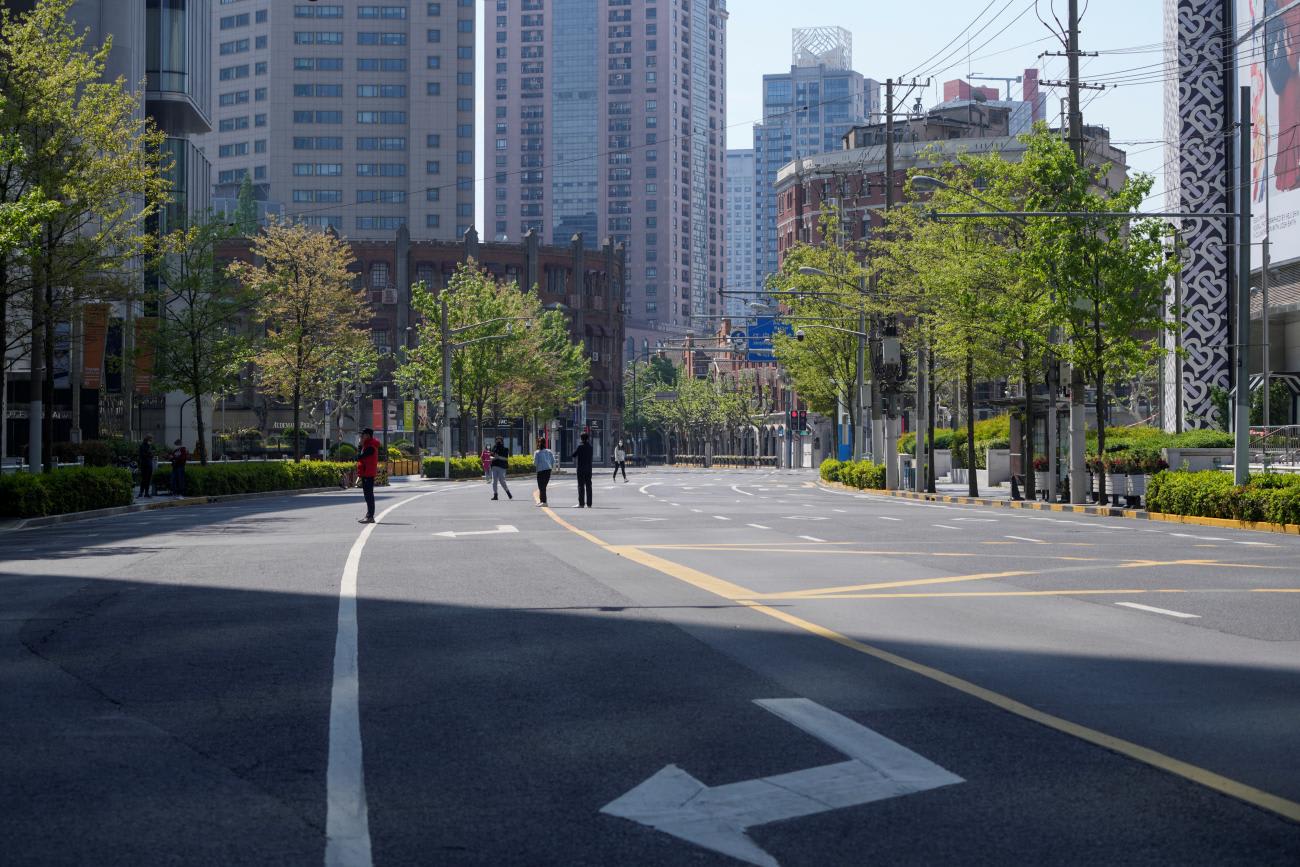
COVID's Economic Hit to China
Lockdowns are effective in curbing the spread of the virus, but they are very expensive. The Purchasing Manager Index (PMI) is a global index of the prevailing direction of economic trends in the manufacturing and service sectors. Recent PMI data for China shows that the economy is contracting at its fastest pace since February 2020. Modeling suggests that a strict lockdown in Shanghai alone could reduce China's real gross domestic product (GDP)—a measure of value added in a country through the production of goods and services—by 4 per cent for the duration of the shutdowns. And if China's four largest cities all undergo strict lockdowns at the same time, national inflation-adjusted GDP would fall 12 percent.
In 2020, China managed to recover from the high, yet short-term, economic costs of their stringent lockdowns. It was the only major economy to grow in 2020. Many were surprised about the speed of economic recovery in China. After restrictions were lifted, these economies managed to almost catch up to their pre-pandemic growth trajectories within a few months.
Multidisciplinary research teams of economists and epidemiologists have developed complex integrated models to understand the effect of lockdowns on both health and economic outcomes, including the DAEDALUS model developed by our team at Imperial College London. We projected smart pandemic mitigation strategies that strategically close higher-risk economic sectors, while allowing dozens of other economic sectors to continue. Smart lockdowns differentiate by economic sectors, focusing on those that contribute most to transmission and least to GDP. Such sectors typically require frequent and close contacts between workers, or between workers and consumers—such as the hospitality, retail, and travel industries. Smart lockdowns also focus on those sectors where economic production can be more easily moved online, for example, the financial services and information technology fields. We found that this would enable schools to remain open and keep hospitalizations within capacity. If lockdowns are limited in time and their end is in sight, businesses are more likely to keep up production and generate inventories that can be sold later. Government transfers can support struggling businesses and workers on furlough, and incomes of households are protected so that pent-up demand fuels recovery after lockdowns are lifted. While hard to assess, some smart lockdowns achieve reductions in deaths at lower costs.
Economists and epidemiologists have developed complex integrated models to understand the effect of lockdowns on both health and economic outcomes
The optimistic projections of our and similar integrated models rest on the assumption that the lockdown is short-term; that capital investments and the overall labor force would remain constant and at pre-pandemic levels; that machinery and equipment are waiting to be switched on again, and workers to return to their workplaces. These projections assume the economy will pick up quickly again after a lockdown, and that there will be no or little long-term scarring effect from the temporary economic shock of lockdowns.
However, there are no reliable modeling projections on the economic impact of a long-term zero-COVID strategy as the one followed by China. There are some indications that international businesses and expats are not waiting around for China to change strategy: they are leaving. Hong Kong is experiencing negative shocks to capital investments and the labor force. A European Chamber of Commerce report from January this year predicted that the zero-tolerance approach to COVID-19 could keep Hong Kong cut off from most of the world until 2024 and could fuel a large-scale exodus of businesses, and international workers and executives from the city's 700,000 strong expat community. Despite a loosening of Hong Kong's COVID policy in recent weeks, there are signs that the exodus has started. Hong Kong's equity fundraising has dropped by 87 per cent from the previous year and marking the worst quarter for the city's equity capital markets since late 2008.
While the reasons for exodus of foreign capital from Hong Kong is not due alone to China's zero-COVID strategy, it is an important contributing factor. Once capital and production have left, it will be difficult to regain economic stability and avert persistent economic damage. In mainland China, repeated lockdowns over the past years have led to shutdowns of factories, including global car manufacturers. Recently, for example, car manufacturer VW suspended production amid the Shanghai COVID lockdown.
Small businesses are most seriously impacted by the recent lockdowns in China, and often don't qualify for government support. Some have predicted that the zero-COVID policy generates a "perfect storm," accelerating the gradual decline of manufacturing in China that is related to increased tariffs, higher wages, and geopolitical factors that started before the pandemic.
The Only Exit from Zero-COVID
As COVID continues to spread in China, it is becoming increasingly clear that the country will sustain lasting economic damage unless it changes its pandemic mitigation strategy. There is only one viable exit from its zero-COVID tactics: effective vaccinations. An obvious strategy would be to roll out a large-scale booster campaign with mRNA vaccines, which reduce mortality and hospitalizations due to COVID. But leaders in China have so far refused to adopt this strategy for political reasons—at great cost to its people.

Our recent report evaluates the economic benefits of a booster campaign with Moderna administered after a vaccination campaign with two doses of Sinovac. While our case study is set in Indonesia, a middle-income country with lower GDP than China, the scenario would be similar. As vaccination coverage of the population increases, lockdowns of businesses and schools can be gradually released. This averts deaths and the high economic losses arising from reduced economic production. It also reduces school closures. We estimate that the economic and social benefit of one dose of the Moderna mRNA vaccine ranges between $2,000 and $3,300 in this specific setting. This makes the Moderna vaccine highly cost-effective, considering the costs are about $30 per shot.
Even if China started an mRNA vaccination campaign today, reaching sufficient coverage could take many months. But this is still a better prospect than continuing a zero-COVID strategy for potentially years. There is little doubt that an mRNA booster vaccination campaign would be highly cost-effective in China, deliver substantial health and economic gains, and allow the country to move out of the zero-COVID strategy while reducing deaths.
So far, none of the global mRNA vaccines have been approved in China, but the country is developing domestic mRNA vaccines. The most promising candidate is ARCoV, which has proven safe in a Phase I trial, and is currently in a Phase III trial. But the omicron variant put a question mark over ARCoV; a small study showed poor results against the highly infectious omicron variant.
With ARCoV approval in limbo, it is hardly the exit strategy China is hoping for, which leaves China with only one viable option: to purchase Moderna or BioNTech/Pfizer vaccines on the global market or produce BioNTech domestically. Fosun Pharma is the Chinese partner of BioNTech licensed to produce and distribute the vaccine in the Greater China region. Fosun was planning to start domestic trial production in August 2021, but this has not yet happened. Currently, the company is in "active talks with authorities on approval of COVID-19 BioNTech-Fosun mRNA vaccine in Chinese mainland," according to a recent statement by Fosun's CEO.
Scaling up domestic production of the BioNTech/Pfizer vaccine may not be needed, though, because the world is moving into excess production of COVID-19 vaccines. Supply is exceeding demand in much of the world, even with many countries rolling out booster shots. Industry insiders expect manufacturers to taper off production this year and next unless another variant emerges. Now would be the time for China to step in and purchase global excess supplies of mRNA vaccines.
The cost of a long-term zero-COVID strategy is high. The jury is still out on whether China contains the highly transmissible omicron variant with the current strategies. In any case, controlling the spread will come at a high price. China is unwilling to become dependent on foreign vaccines, but this political decision could cost many lives, or alternatively, lead to additional economic damage that could take years, if not decades, to mitigate.
